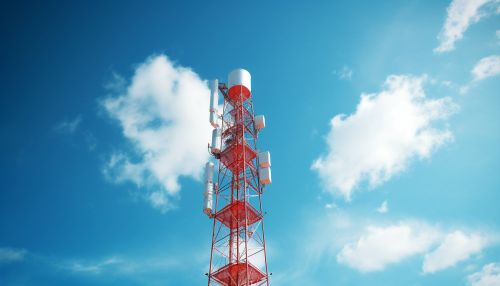Mobile Telecommunication
Introduction
Mobile telecommunication is a type of data transmission used in wireless communication networks and devices. It involves the use of radio frequencies to transmit data to and from devices that are capable of receiving and transmitting data wirelessly. These devices include mobile phones, tablets, and other wireless devices. The technology is central to modern digital communications and impacts many aspects of society, including business, education, entertainment, and social interactions.


History
The concept of mobile telecommunication began with the invention of the radio in the late 19th century. However, it was not until the mid-20th century that the first mobile telecommunication systems were developed. These early systems were limited in their capabilities and were primarily used for military and emergency services. The first generation (1G) of mobile telecommunication technology was introduced in the 1980s, which marked the beginning of the mobile phone era.
Mobile Telecommunication Technologies
Mobile telecommunication technologies have evolved significantly over the years. The progression from 1G to the current 5G technology has seen a significant increase in the speed, capacity, and functionality of mobile networks.
1G
The first generation of mobile telecommunication technology, known as 1G, was introduced in the 1980s. This analog system allowed for voice calls only and had limited coverage and capacity. The most notable 1G system was the Advanced Mobile Phone System (AMPS) which was launched in the United States in 1983.
2G
The second generation (2G) of mobile telecommunication technology was introduced in the 1990s. This was a digital system that provided better quality and security compared to 1G. 2G networks introduced data services for mobile, starting with Short Message Service (SMS) text messaging.
3G
The third generation (3G) of mobile telecommunication technology was introduced in the early 2000s. 3G networks provided faster data transmission rates that allowed for more advanced applications such as mobile internet access, video calls, and mobile TV.
4G
The fourth generation (4G) of mobile telecommunication technology was introduced in the late 2000s. 4G networks provide even faster data transmission rates compared to 3G, enabling high-quality video streaming, gaming, and other data-intensive applications on mobile devices.
5G
The fifth generation (5G) of mobile telecommunication technology is the latest generation and was introduced in the late 2010s. 5G networks provide extremely fast data transmission rates, low latency, and the ability to connect a large number of devices simultaneously. This makes 5G suitable for applications such as Internet of Things (IoT), autonomous vehicles, and virtual reality.
Mobile Telecommunication Standards
There are several mobile telecommunication standards that have been developed to ensure compatibility and interoperability between different mobile networks and devices. These include the Global System for Mobile Communications (GSM), Code Division Multiple Access (CDMA), and Long-Term Evolution (LTE).
Global System for Mobile Communications (GSM)
Global System for Mobile Communications (GSM) is a standard developed by the European Telecommunications Standards Institute (ETSI) to describe protocols for second-generation (2G) digital cellular networks used by mobile devices.
Code Division Multiple Access (CDMA)
Code Division Multiple Access (CDMA) is a digital cellular technology that uses spread spectrum techniques to allow multiple users to share the same frequency band simultaneously.
Long-Term Evolution (LTE)
Long-Term Evolution (LTE) is a standard for wireless broadband communication for mobile devices and data terminals. It is based on the GSM/EDGE and UMTS/HSPA technologies and increases the capacity and speed of wireless data networks.
Impact of Mobile Telecommunication
Mobile telecommunication has had a significant impact on society. It has transformed the way we communicate, work, learn, and entertain ourselves. It has also played a crucial role in the development of the digital economy, enabling the growth of industries such as e-commerce, digital media, and online services.
Future of Mobile Telecommunication
The future of mobile telecommunication lies in the development and deployment of 5G networks and beyond. These networks will provide the infrastructure needed for the next generation of digital services and applications, including IoT, autonomous vehicles, and virtual reality.
See Also
References
1. "Mobile Telecommunication: A Comprehensive Guide". John Wiley & Sons, 2018. 2. "The Evolution of Mobile Telecommunication Technology". IEEE Communications Magazine, 2017. 3. "The Impact of Mobile Telecommunication on Society". Journal of Information Technology, 2019. 4. "The Future of Mobile Telecommunication". Telecommunications Policy, 2020.
